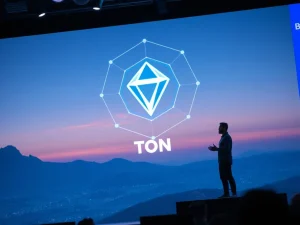Phala Network Makes Strategic Leap: Fully Migrating from Polkadot to Ethereum L2

The cryptocurrency landscape constantly evolves. Consequently, projects must adapt to remain competitive and foster growth. Phala Network, a prominent AI crypto project, is making a significant strategic move. It is fully transitioning its operations from a Polkadot parachain to an Ethereum L2. This bold blockchain migration signals a new chapter for the confidential computing platform, aiming to capitalize on Ethereum’s robust ecosystem.
The Strategic Shift to Ethereum L2 for Phala Network
Phala Network’s community recently approved a pivotal proposal. This vote paves the way for a complete migration to its existing Ethereum Layer 2 solution. This decision is not abrupt; Phala already launched a functional Ethereum L2 in January. The full transition aims to consolidate all project activities. It centralizes staking, governance, and confidential compute operations within a single, unified environment. The team believes Ethereum offers a stronger, more scalable ecosystem for its specialized services.
Furthermore, this move promises several key advantages for Phala Network. It seeks enhanced scalability to handle growing computational demands. It also targets enterprise-grade security, a critical factor for its client base. Direct integration with Ethereum’s vast liquidity and extensive tooling becomes possible. This integration can unlock new opportunities for development and user adoption. The migration is set to commence before November 20, with token holders receiving new ERC-20 PHA tokens at a 1:1 ratio. Importantly, staking, rewards, and governance will continue seamlessly on the new L2.
Understanding Phala Network’s Core Mission in AI Crypto
Phala Network operates as a decentralized cloud computing network. Its primary mission is to provide private, secure, and scalable computation. This capability is vital for AI-integrated Web3 applications. The project gained early recognition as one of the first to secure a Polkadot parachain slot. This occurred during the highly anticipated auctions in late 2021. Phala’s focus on confidential AI and GPU compute distinguishes it within the broader AI crypto sector. These specialized offerings are designed to meet the rigorous demands of enterprise clients requiring secure data processing.
The network’s infrastructure leverages trusted execution environments (TEEs). These hardware-based security features ensure that computations remain private, even from the node operators themselves. This level of privacy is crucial for sensitive AI models and proprietary data. As the demand for decentralized AI grows, Phala positions itself as a foundational layer. It provides the necessary infrastructure for secure and confidential AI development and deployment. This technological foundation has been a cornerstone of Phala’s value proposition.
Why Phala Opted for a Full Blockchain Migration from Polkadot Parachain
The decision to fully move from a Polkadot parachain represents a significant strategic pivot. The proposal outlined several reasons for this comprehensive blockchain migration. Maintaining a parachain slot on Polkadot requires substantial resources. It also locks projects into an infrastructure with potentially limited scalability for Phala’s specific needs. In contrast, an Ethereum L2 offers lower operational overhead. It also provides direct access to cutting-edge computation technologies.
Specifically, the proposal highlighted the advantages of deploying TDX and GPU-based confidential compute workloads on Ethereum. Phala has already observed early commercial traction in these areas. This focus on niche, high-performance computing capabilities drove the migration decision. Unlike some other projects, such as Astar and KILT Protocol, which adopted a multichain approach, Phala chose a complete shift. This demonstrates a strong conviction in Ethereum’s ecosystem for its long-term growth and technical requirements. The move allows Phala to dedicate its resources more efficiently towards its core mission.
Impact on PHA Token Holders and the Broader AI Crypto Landscape
The blockchain migration to an Ethereum L2 carries significant implications for PHA token holders. As mentioned, existing PHA holders will receive the new ERC-20 variant at a 1:1 ratio. This ensures continuity and protects their investments. The seamless transition of staking, rewards, and governance mechanisms minimizes disruption. It also provides confidence in the project’s ability to execute such a complex move effectively.
Phala Network holds a notable position within the AI crypto market. According to CoinGecko data, it ranks as the 11th largest AI-agent-related crypto-asset by market capitalization. Its total market cap stands at approximately $80.6 million, placing it among the top 50 largest AI tokens. This migration could enhance its visibility and accessibility within the broader crypto market. Leveraging Ethereum’s extensive user base and developer community can attract new participants and foster further innovation. The move also signals a growing trend of projects optimizing their infrastructure for specific technological advantages.
Conclusion: Phala Network’s Future on Ethereum L2
The full transition of Phala Network from a Polkadot parachain to an Ethereum L2 marks a bold strategic pivot. This significant blockchain migration underscores the dynamic nature of the Web3 space. It reflects Phala’s commitment to enhancing its confidential AI and GPU compute offerings. By aligning with Ethereum, Phala aims to achieve greater scalability, improved security, and direct access to a vibrant ecosystem. This move could solidify Phala’s role as a leading player in the rapidly expanding AI crypto sector. It positions the project for sustained growth and innovation in decentralized confidential computing.










